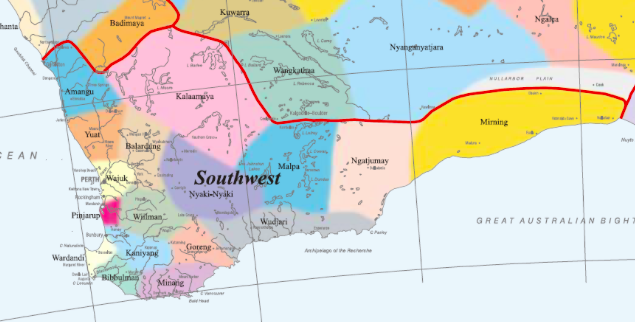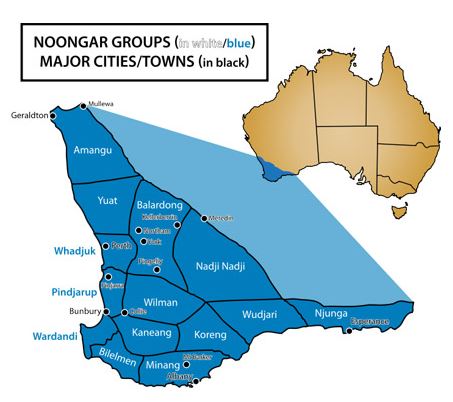AustLit
-
Click here to return to Language and Country > Regions
This collection of informational trails are under development in 2019. They will continually evolve as new works and information about writers are added to BlackWords.
-
The word Noongar means 'a person of the south-west of Western Australia', an area that extends from Geraldton on the west coast to Esperance on the south coast. Noongar language encompasses fourteen dialects, in keeping with the vastness of their space.
This trail introduces Noongar writers, storytellers, and works.
The word Noongar means 'a person of the south-west of Western Australia'. It can also mean 'original inhabitants of south-west of Western Australia'. This area extends from north of Jurien Bay, inland to Moora and down to the south west coast near Esperance and Bremer Bay.
Noongar is their official language, and there are several ways in which it is spelled and pronounced: Noongar, Nyungar, Nyoongar, Nyoongah, Nyungah, Nyugah, Yungar and Noonga. There are fourteen dialects that are associated with Noongar language : Nyaki Nyaki, Bibbulman, Yuat, Minang, Wardandi, Kaniyang, Goreng, Pinjarup, Wiilman, Wudjari, Wajuk, Balardung, and Tjapanmay.
The BlackWords team have so far identified over 200 writers, creators and storytellers who identify as Noongar. Prominent Noongar writers include Kim Scott, Graeme Dixon, and Alf Taylor.Readers are advised to explore resources available at the Australian Institute for Aboriginal and Torres Strait Islander Studies (AIATSIS) website and the zoomable map of Indigenous Australia, developed as a part of the Encyclopaedia of Aboriginal Australia.
Discover all Noongar writers | Discover all records related to Noongar in AustLit
Or, conduct your own Advanced Search
Warning: Please be aware that this work may contain images of people who are now deceased.
Sources include: AustLang, AITSIS, and Kaartdijin Noongar.
-
 Image courtesy of Creative SpiritsIn an invasive, paternalistic, federal public policy environment for Indigenous communities, this book provides an in-depth account of one person's experiences as a 'Stolen Generation' Aboriginal Australian...The book presents a rare autobiographical journaling of the psychological impact of institutionalisation on an Indigenous woman, her search for family, community and identity, her psychological breakdown and her personal reconstruction through telling her story in a supportive educational environment. (...more)See full AustLit entry
Image courtesy of Creative SpiritsIn an invasive, paternalistic, federal public policy environment for Indigenous communities, this book provides an in-depth account of one person's experiences as a 'Stolen Generation' Aboriginal Australian...The book presents a rare autobiographical journaling of the psychological impact of institutionalisation on an Indigenous woman, her search for family, community and identity, her psychological breakdown and her personal reconstruction through telling her story in a supportive educational environment. (...more)See full AustLit entry -
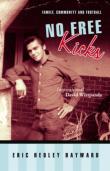 Image courtesy of publisher's website.No Free Kicks: Family, Community and Football: A Noongar Story is based on a thesis presented as part of the requirements for the award of the Degree of Master of Arts, Indigenous Research and Development at the Curtin University of Technology, 2002. It details the experiences of the author and his family and includes an extensive history of involvement with Australian Rules Football using methodologies which seek, and value, Aboriginal perspectives on their involvement. (...more)See full AustLit entry
Image courtesy of publisher's website.No Free Kicks: Family, Community and Football: A Noongar Story is based on a thesis presented as part of the requirements for the award of the Degree of Master of Arts, Indigenous Research and Development at the Curtin University of Technology, 2002. It details the experiences of the author and his family and includes an extensive history of involvement with Australian Rules Football using methodologies which seek, and value, Aboriginal perspectives on their involvement. (...more)See full AustLit entry -
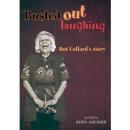 Image courtesy of publisher's website.'Dot Collard weaves together stories centred around her family in the south-west of Western Australia. A mother of nine children, Dot was immersed in family life. It wasn't until she was in her sixties that she launched her career as a theatre and television actress. This book is for anyone who loves a good belly laugh. Dot Collard is a national treasure.' Source: Publisher's blurb. (...more)See full AustLit entry
Image courtesy of publisher's website.'Dot Collard weaves together stories centred around her family in the south-west of Western Australia. A mother of nine children, Dot was immersed in family life. It wasn't until she was in her sixties that she launched her career as a theatre and television actress. This book is for anyone who loves a good belly laugh. Dot Collard is a national treasure.' Source: Publisher's blurb. (...more)See full AustLit entry -
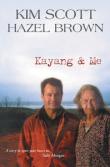 Image courtesy of Penguin Books AustraliaSee full AustLit entry
Image courtesy of Penguin Books AustraliaSee full AustLit entryFrom the award-winning author of Benang, and his Aunty Hazel, comes this monumental history of the south coast Noongar people of Western Australia. Kayang - meaning, respectfully, Old Lady - was born in 1925. Through her candid voice comes the story of her people and her country, interwoven with traditional tales.
Award-winning novelist Kim Scott and his elder, Hazel Brown, have created a monumental family history of the Wilomin Noongar people. Kayang & Me is a powerful story of community and belonging, revealing the deep and enduring connections between family, country, culture and history that lie at the heart of Indigenous identity.
(...more) -
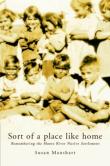 Image courtesy of publisher's website.See full AustLit entry
Image courtesy of publisher's website.See full AustLit entry'Set amongst the low scrub of the Mogumber sand plain north of Perth, the Moore River Native Settlement was, for thirty years, "sort of a place like home" for thousands of Aboriginal people. Sanctuary, work camp, orphanage, prison and rural idyll, the settlement was part of a bold social experiment by the Chief Protector of Aborigines, A. O. Neville, the aim of which was nothing less than the total eradication of a race and a culture.
Making extensive and imaginative use of oral resources and hitherto unseen documents, the book paints a vivid and intimate picture of the life experience of Moore River inmates, while documenting the appalling bureaucratic incompetence, official indifference and occasional outright brutality that made Moore River notorious.
(...more) -
No Options, No Choice! : The Moore River Experience : My Father, Thomas Corbett, an Aboriginal Half-Caste by Rosemary van den Berg and Thomas Corbett
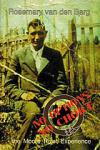 Image courtesy of Magabala Books'Autobiography of Thomas Corbett as told to his daughter; born 1910 in the Pilbara, removed from his mother and taken to Moore River Settlement; working life in the south west of Western Australia; labouring and stock work; return to Moore River; marriage and family; final move from Moore River to Pinjarra in 1944.' Source: http://www.aiatsis.gov.au/library/ (Sighted: 01/07/2009). (...more)See full AustLit entry
Image courtesy of Magabala Books'Autobiography of Thomas Corbett as told to his daughter; born 1910 in the Pilbara, removed from his mother and taken to Moore River Settlement; working life in the south west of Western Australia; labouring and stock work; return to Moore River; marriage and family; final move from Moore River to Pinjarra in 1944.' Source: http://www.aiatsis.gov.au/library/ (Sighted: 01/07/2009). (...more)See full AustLit entry -
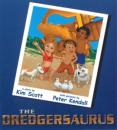 Image courtesy of publisher's website.'Find out what happens when a Dredgersaurus gets loose on the beach.' (Source: Fremantle Press website) (...more)See full AustLit entry
Image courtesy of publisher's website.'Find out what happens when a Dredgersaurus gets loose on the beach.' (Source: Fremantle Press website) (...more)See full AustLit entry -
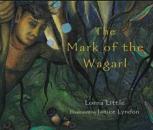 This image has been sourced from online.This is a story about the Wagarl, the sacred water snake who inhabited the waterways in the country belonging to the Nyoongar people. It tells how a little boy came to receive the Wagarl for his totem. (...more)See full AustLit entry
This image has been sourced from online.This is a story about the Wagarl, the sacred water snake who inhabited the waterways in the country belonging to the Nyoongar people. It tells how a little boy came to receive the Wagarl for his totem. (...more)See full AustLit entry -
Noongar Mambara Bakitj by Kim Scott, Lomas Roberts and Wirlomin Noongar Language and Stories Project
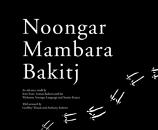 Image courtesy of publisher's website.'A young man follows a kangaroo track deep into the old people's country. Along the way he meets some spirit creatures ("mambara") who allow him to go on. But after he has hunted down the kangaroo, one mambara is angry and demands a fight ("bakitj"). All day they fight, until the Noongar discovers he is a magic person and defeats the mambara.See full AustLit entry
Image courtesy of publisher's website.'A young man follows a kangaroo track deep into the old people's country. Along the way he meets some spirit creatures ("mambara") who allow him to go on. But after he has hunted down the kangaroo, one mambara is angry and demands a fight ("bakitj"). All day they fight, until the Noongar discovers he is a magic person and defeats the mambara.See full AustLit entry
'This book is inspired by a story Bob Roberts and Freddie Winmer told the American linguist Gerhardt Laves at Albany, Western Australia, around 1931. (...more)Noongar Mambara Bakitj is part of the series created by the Wirlomin Noongar Language and Stories Project workshopped through a series of community meetings involving ellders - some of whom told stories to American linguist Gerhardt Laves at Albany, Australia in 1931.
-
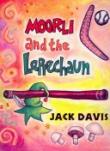 This image has been sourced from Booktopia.'When Moorli, the Aboriginal rainmaking spirit, meets Loopy, an Irish leprechaun, they determine to help Joan go on a school excursion to Uluru, despite her father's opposition to the idea. An authentic and entertaining story imbued with Jack Davis' understanding of racial tensions.' Source: Publisher's blurb (...more)See full AustLit entry
This image has been sourced from Booktopia.'When Moorli, the Aboriginal rainmaking spirit, meets Loopy, an Irish leprechaun, they determine to help Joan go on a school excursion to Uluru, despite her father's opposition to the idea. An authentic and entertaining story imbued with Jack Davis' understanding of racial tensions.' Source: Publisher's blurb (...more)See full AustLit entry -
See full AustLit entry
Norma MacDonald a descendant from the Yamitji people of the Gascoyne region and the Nyungar people of the South West of Western Australia. In 1994, she enrolled as the only Aboriginal art student at Midland College of TAFE (Western Australia). She has since established a career as a full-time artist and has illustrated a children's picture book, Corroboree (2004). MacDonald's work has been successfully shown in both group and solo exhibitions which include: 'I Can Fly' (2002) and 'Coming Home' (2003).
-
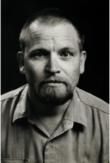 This image has been sourced from UQP websiteSee full AustLit entry
This image has been sourced from UQP websiteSee full AustLit entryGraeme Dixon's mother was a Noongar woman from Katanning and his father was an English migrant orphan who grew up at Fairbridge Farm. He spent several years in Sister Kate's Children's Home, Perth.
Between ten and fourteen, Dixon lived in a Salvation Army Boys Home, before being expelled from high school. Subsequently, he was in and out of reformatories, and at sixteen he was sent to Fremantle Prison where he spent most of the next nine years. His first poetry was written in prison.
-
 Image courtesy of UQP'Graeme Dixon's ballads speak out on contemporary and controversial issues, from Black deaths in custody to the struggles of single mothers. Contrasted with these are poems of spirited humour and sharp satire. In Holocaust Island a powerful new voice emerges from a history of displacement.' (Source: Publisher's blurb) (...more)See full AustLit entry
Image courtesy of UQP'Graeme Dixon's ballads speak out on contemporary and controversial issues, from Black deaths in custody to the struggles of single mothers. Contrasted with these are poems of spirited humour and sharp satire. In Holocaust Island a powerful new voice emerges from a history of displacement.' (Source: Publisher's blurb) (...more)See full AustLit entry -
 See full AustLit entry
See full AustLit entry'Graeme Dixon's journey is one that has been made too often by too many Aboriginal people. It is a journey that lies within a legal system that has at its core a lock and key: on doors and windows, in hearts and minds it incarcerates whole communities. Graeme's poems and stories speak from the heart and they speak from experience, the living voice of Aboriginal prisoners past and present.' Source: Holocaust Revisited: Killing Time (2003)
(...more) -
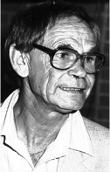 This image has been sourced from Magabala Books websiteSee full AustLit entry
This image has been sourced from Magabala Books websiteSee full AustLit entryAlf Taylor was a member of the Stolen Generations. He and his brother were removed from their family as infants and placed in the New Norcia Mission, which he recounts in God, The Devil, and Me. Taylor only discovered his heritage when he left the mission at age sixteen and searched for his family.
As a young man, Taylor worked in the Perth and Geraldton areas as a seasonal farm worker, before joining the armed forces and living in several locations around Australia. Taylor and his wife had seven children, of whom only two survived.
-
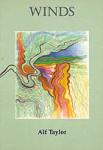 Image courtesy of Magabala Books'The second collection from this major Australian poet deals with a range of subjects, but never strays far from the depth of our feelings and our human relationships.' Source: Publisher's blurb. (...more)See full AustLit entry
Image courtesy of Magabala Books'The second collection from this major Australian poet deals with a range of subjects, but never strays far from the depth of our feelings and our human relationships.' Source: Publisher's blurb. (...more)See full AustLit entry -
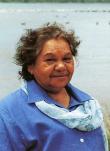 Photo courtesy of Green Skills Inc. newsletter (http://www.greenskills.org.au/pub/jrc/jrc9.html)See full AustLit entry
Photo courtesy of Green Skills Inc. newsletter (http://www.greenskills.org.au/pub/jrc/jrc9.html)See full AustLit entryNoongar Elder, Maxine Fumagalli, daughter of Violet and Elijah Jones was a writer, poet, artist, healer and conservationist.
Maxine Fumagalli remembered much of the folklore that her mother had told her before she became absorbed in learning western ways, growing up and having a family. For the past 30 years Maxine made her home in the town of Denmark on the south coast where she raised her family (The Aboriginal word for Denmark is Kurrabup, which means place of the black swan).
She had a deep love for the land and people of the Southwest and also had a vital interest in promoting Noongar culture and heritage.
-
This is a book of poetry and early family history that was recorded onto tape and transcribed by Maxine [Fumagalli] in 1991. The accompanying poems are published for the first time. (...more)See full AustLit entry
-
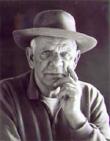 Image courtesy UQPSee full AustLit entry
Image courtesy UQPSee full AustLit entryJack Leonard Davis grew up at Yarloop, Western Australia. His mother was forcibly removed from her parents, and Davis himself later discovered the details of her family history. Sent to the Moore River Native Settlement to learn farming at the age of 14, Davis' experiences there would later provide a foundation for his dramatic writing. After nine months, he left the Settlement. His father's subsequent death created a family crisis, which led to the first of many jobs for Davis. He has worked as a stockman, boxer, horse-breeder, train driver and truck driver.
-
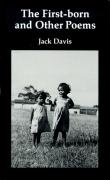 See full AustLit entry
See full AustLit entryA collection of poems by Jack Davis that were inspired by his life, and that of his family.
(...more) -
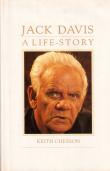 'This...volume of poems takes up many of the themes and concerns found in his earlier work. Whether describing a bush creature with gentle irony and a twinkle in his pen, observing the mysteries of human behaviour, evoking with lyrical grace the Aboriginal love of land, or reaching out for mutual understanding across barriers of prejudice and ignorance, these poems speak simply and openly, sometimes poignantly, always with sincerity and a delight in language'. (Source: back cover, 1988 edition) (...more)See full AustLit entry
'This...volume of poems takes up many of the themes and concerns found in his earlier work. Whether describing a bush creature with gentle irony and a twinkle in his pen, observing the mysteries of human behaviour, evoking with lyrical grace the Aboriginal love of land, or reaching out for mutual understanding across barriers of prejudice and ignorance, these poems speak simply and openly, sometimes poignantly, always with sincerity and a delight in language'. (Source: back cover, 1988 edition) (...more)See full AustLit entry -
-
-
-
-
 Screen cap from promotional trailerSee full AustLit entry
Screen cap from promotional trailerSee full AustLit entryBased on real life events that occurred in 1931, Rabbit-Proof Fence is the story of three mixed-race Aboriginal children who are forcibly abducted from their mothers by the Western Australian government. Molly (aged fourteen), her sister Daisy (aged eight), and their cousin Gracie (aged ten) are taken from their homes at Jigalong, situated in the Pilbara region of Western Australia, at the orders of the Protector of Aborigines, A.O. Neville, and sent to an institution at Moore River to be educated and trained as domestic servants.
(...more) -
'Frank and Vinnie are modern day headhunters. They don't just want any heads, they want famous heads, heads with a price on them. Confessions of a Headhunter is a thought provoking and political exploration of the way in which iconic representations of Australia's history have typically masked indigenous realities and glorified injustice.' Source: Libraries Australia. (Sighted 05/02/2008). (...more)See full AustLit entry
-
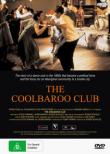 Cover image has been sourced from Ronin Films website.See full AustLit entry
Cover image has been sourced from Ronin Films website.See full AustLit entryIn Perth, Western Australia, the Coolbaroo Club operated for 14 years (1946-1960) as a meeting place and a community focus for the local Aboriginal community. The Club was the only Aboriginal-run dance club in a city which practised unofficial apartheid. Continually harrassed by police with enforced fraternisation bans and curfews placed on them, the Indigenous population was also required to carry identity cards and deal with bureaucratic obstruction. During its lifetime, the Club attracted black musicians and celebrities from all over Australia and occasionally from overseas, among them Nat 'King' Cole, Harold Blair, and the Harlem Globetrotters.
(...more)
According to the Kaartijin Noongar website, The Coolbaroo League (established in 1947) was a safe haven and "existed in a time of harsh restrictions for Noongars and all Aboriginal people, when we were not allowed to enter the central city of Perth."
-
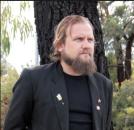 This image has been sourced from the Murdoch University.Glen Stasiuk is a maternal descendent of the Minang-Wadjari Nyoongars (Aboriginal peoples) of the South-West of Western Australia. Glen Stasiuk is director of the Kulbardi Aboriginal Centre at Murdoch University in Perth. The Forgotten was part of Stasiuk's honors project at Murdoch University in 2002. Glen Stasiuk's great uncle Augustus 'Peg' Farmer was one of the first Aboriginal soldiers to receive a war medal. Weewar dramatises the first Nyoongar man to be tried under white law.See full AustLit entry
This image has been sourced from the Murdoch University.Glen Stasiuk is a maternal descendent of the Minang-Wadjari Nyoongars (Aboriginal peoples) of the South-West of Western Australia. Glen Stasiuk is director of the Kulbardi Aboriginal Centre at Murdoch University in Perth. The Forgotten was part of Stasiuk's honors project at Murdoch University in 2002. Glen Stasiuk's great uncle Augustus 'Peg' Farmer was one of the first Aboriginal soldiers to receive a war medal. Weewar dramatises the first Nyoongar man to be tried under white law.See full AustLit entry -
South West Aboriginal Land and Sea Council
South West Aboriginal Land and Sea Council (SWALSC) is a native title representative body which works in the interests of the Noongar people. Their informative website contains information such as the history of the Noongar people, their culture, demographic information, and produces and distributes newsletters, media releases and other publications for its members.The website also contains useful links to other organisations.
The Wirlomin Noongar Language and Stories Project
The Wirlomin Noongar Language and Stories Project Incorporated Reference Group comprises of family members who are descended from the south west of Western Australia and are interested in publishing and promoting some of the stories from that area. Their aim is to reclaim Wirlomin stories and dialect in support of the maintenance of Noongar language. Stories are shared with Noongar families and communities as part of a process to claim, control and enhance Wirlomin Noongar cultural heritage.
Kaatdijin Noongar - Sharing Noongar Knowledge
The Kaartdijin website contains relevant information relating to Noongar people. The aim of the website is to share the richness of their knowledge, culture and history in order to strengthen their community and promote understanding.
Whadjuk Trail Network
While the Whadjuk Trail Network website is primarily about the walking trails on Noongar land, it also contains audio files of oral stories by local Noongar Elders about Whadjuk area.
Noongar Boodjar Language Cultural Aboriginal Corporation
This organisation provides information about Noongar language, as well as education and training. It also helped develop Noongapedia.
-
Originally compiled by Irene Howe in 2014. Revised and updated in 2019.
You might be interested in...

